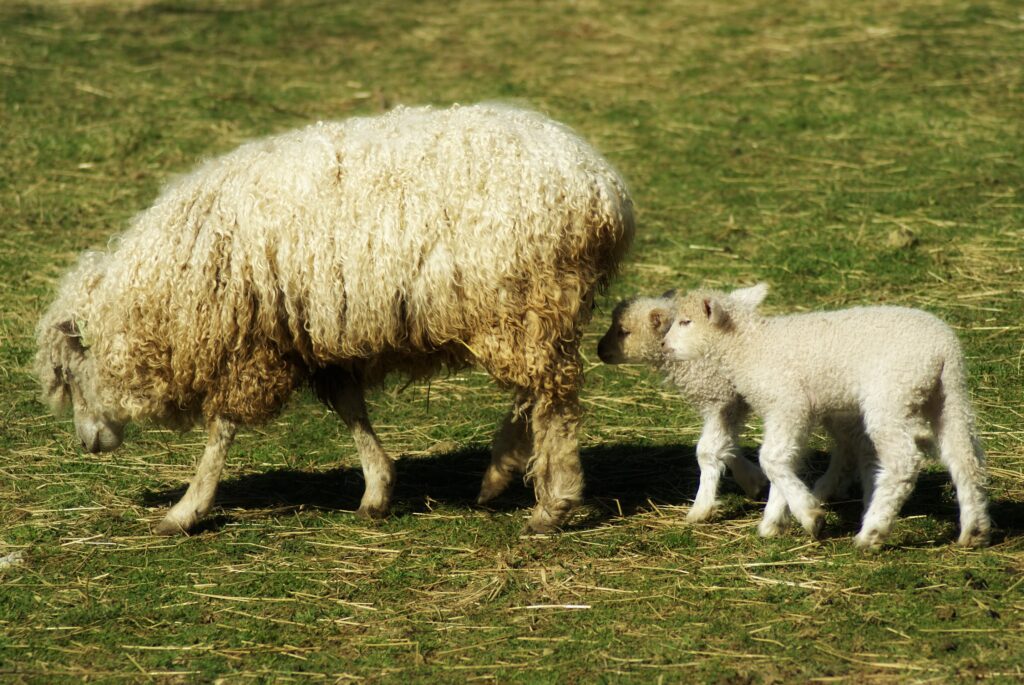
Wool Week 2022 at the Frontier Culture Museum
(Published 04/21/2022)
Have you ever wondered what people from the past did when they wanted to update their wardrobes? Today, we go to the store or even order our outfits online, but the process was much more involved for our ancestors and the early settlers of the Shenandoah Valley. Not only did they have to obtain the raw materials, but they also had to clean them, and transform them into cloth. Finally, they had to turn the fabric into wearable clothing or other textiles. Each year during Wool Week, the Frontier Culture Museum invites visitors to celebrate spring as well as the process of creating useful products from raw materials.
How can I visit?
Wool Week 2022 is April 25 – May 1
There is no extra cost beyond regular admission to the museum.
Museum visitors will see:
- Demonstrations focusing on wool and flax processing
- Sheep shearing
- New baby lambs
- Regular museum exhibits
How long will the lambs be little?
Lambs are born in the spring when there’s plenty of grass to eat and the weather has lost its winter chill. Ewes give birth to one to three lambs at a time, but twins are most common. Lambs usually weigh about the same as human babies. They can walk within a few hours of being born!

What is wool, anyway? How did people on the frontier harvest it?
Wool is the heavy winter coat of the sheep that’s harvested each year in the spring. While we typically use mechanical clippers now, people from the frontier would use sharpened blades like scissors with the pivot point at the end. Skilled shearers can remove the wool quickly and keep it in one piece.
Do sheep like getting shorn?
Sheep shearing is very much like getting a haircut, but nervous sheep may struggle during the shearing process. It takes a lot of strength to hold them still and clip the wool at the same time. Sheep shearers should take their time to prevent injuries. Shorn sheep feel cooler for the upcoming hot weather and are probably relieved to be rid of their heavy, dirty coats.
How do they clean the wool?
Contrary to what we see in picture books, sheep are pretty dirty. Museum interpreters use their hands to pull and tease the wool fibers apart to get rid of dirt and parasites. Next, they wash and card the wool. Carding untangles the fibers and stretches them out so that they can be spun. The museum staff will teach you how to perform each of these steps.
How did settlers color the wool?
We didn’t have the synthetic dyes we use now until the middle of the 19th century. Before that, people colored their fabrics with plants, lichens, and even insects. They used fixatives like salt and vinegar to help the dyes stay in place. Professional dyers were very protective about their recipes since some worked better than others. Many colors weren’t readily available, especially in the materials for the dyes that came from far away. Wool can be dyed before or after spinning.
How did they turn that pile of wool into my favorite sweater?
Spinners wind stretched-out wool fibers into yarn. Next, the yarn is formed into a fabric by knitting or by weaving on a loom. Both the German and the Irish farms have looms and visitors can watch the intricate, time-consuming process of working one.
What else can I see at the museum?
The Frontier Culture Museum is a living history museum that will connect present-day people with the lives and histories of those who lived in the past. The walkable museum offers a chance to explore the homesteads of the various people who settled in the region from other places. They include farms from West Africa, England, Ireland, and Germany. The museum also offers a Native American village and American farms from various time periods.
Have more questions? Head to Wool Week to get answers!
Check out more events on Staunton on Tap.
Newsletter Sign-up
Stay up to date on the latest and greatest happening in Staunton.


